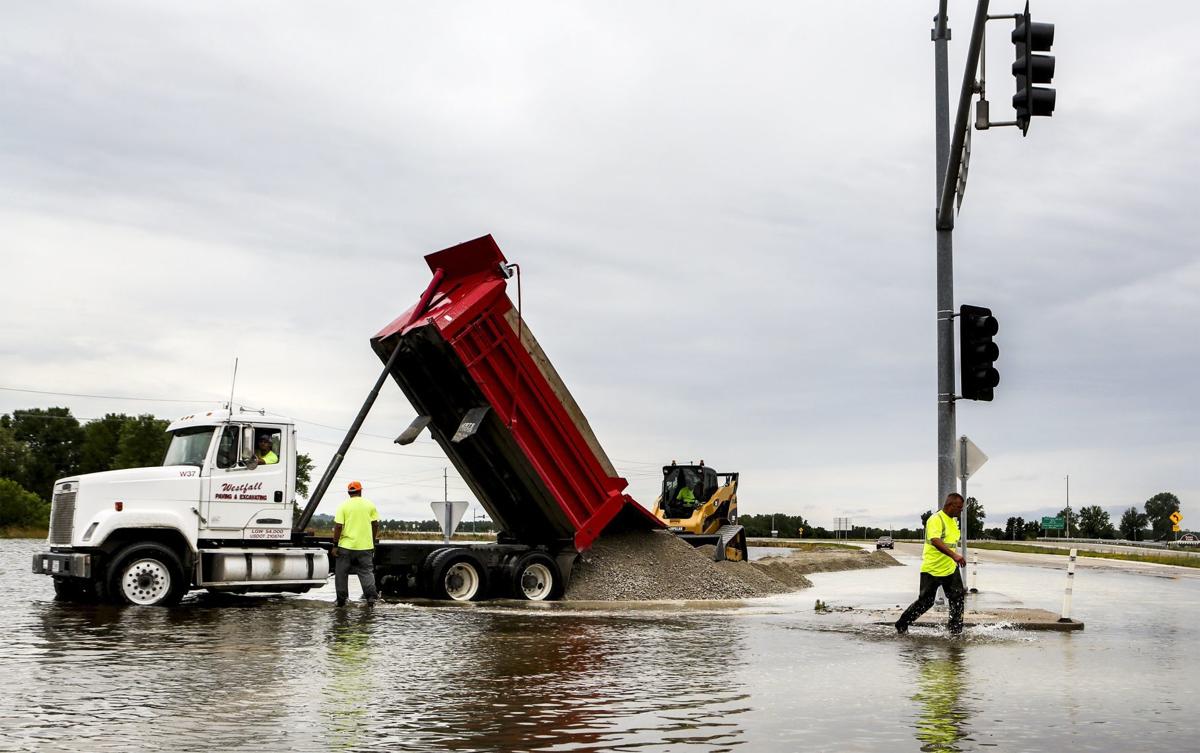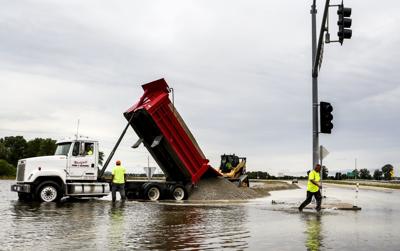MARYLAND HEIGHTS ŌĆö In a move that surprised city officials, ╣¹Į┤╩ėŲĄ County Executive Sam PageŌĆÖs representatives effectively blocked a plan to use as much as $151 million in subsidies to help spur development in some 2,200 acres of flood-prone land along the Missouri River.
The six members of the Tax Increment Financing Commission appointed by Page joined Parkway School District Chief Financial Officer Patty Bedborough in a 7-5 vote Friday evening against creating a TIF in the low-lying area. The cityŌĆÖs three appointees, Pattonville fire Chief Dave Dotson and Ron Orr of the Pattonville School District supported the TIF.
The Maryland Heights City Council could still approve the TIF. But because of 2016 changes to MissouriŌĆÖs TIF law meant to rein in municipalities using tax incentives to poach sales tax-generating developments from their neighbors, the vote severely limits what a TIF that Maryland Heights officials approve can pay for.
People are also reading…
ŌĆ£IŌĆÖm disappointed,ŌĆØ said Maryland Heights Mayor Mike Moeller. ŌĆ£We were told that the county would support it. ItŌĆÖs obvious that they didnŌĆÖt.ŌĆØ
He said city officials had ŌĆ£numerous meetings with (Page) and his staffŌĆØ and got no indication they would block the plan.
ŌĆ£IŌĆÖm very surprised,ŌĆØ Moeller said. ŌĆ£But, it is an election year.ŌĆØ
Page is facing ╣¹Į┤╩ėŲĄ County Assessor Jake Zimmerman in the August Democratic Party primary for county executive, a race many expect will decide the outcome of the general election.
Page adviser Paul Hampel, one of the county executiveŌĆÖs appointees to the TIF Commission, said after the vote that TIF Commission members arrived at their opinions independently. The TIF Commission was formed in September and has held several public hearings on the proposal since then.
ŌĆ£The current approach of using (TIF) to fund a development in a large green space thatŌĆÖs also a flood plain is a plan that we will not support,ŌĆØ Hampel said.
He referred other questions to PageŌĆÖs spokesman, who declined to comment further.
Maryland Heights officials have long hoped to develop the area, and landowners there say they are tired of frequent flooding caused by pools of storm water. But environmental groups and others argued against using TIF ŌĆö which lets cities and developers use future tax dollars generated by new development to finance projects ŌĆö to help spur construction on what is now farmland and low-density development.
Property owners in the area decided years ago to tax themselves through the Howard Bend Levee District to finance a 500-year levee ŌĆö constructed between 1999 and 2004. Yet development has not followed as it did in other former flood plains, such as Chesterfield Valley.
Maryland Heights Economic Development Manager Jim Carver stressed that no new levees would have been built as part of the plan, only storm water infrastructure to deal with water that pools on the land after rain.
The lack of pumping stations needed to handle the storm water that now collects on the low-lying ground has stymied development. This spring, for instance, the levee held, but farmers and landowners spent weeks battling floodwater that collected in the area after heavy rains.
The new TIF district pushed by Maryland Heights officials was seen as a way to help finance the pumping stations that many believe are needed for development but that some say the Howard Bend Levee District can ill afford. The levee district already had to raise the levee assessments that landowners there pay on their property tax bill by 9% this year to keep up with higher payments on a debt load of around $24 million.
ŌĆ£We have a few developers who are ready to move forward,ŌĆØ said Carver, who is also on the levee districtŌĆÖs board. ŌĆ£But they want the assurances that they are going to stay dry.ŌĆØ
Maryland Heights planning documents suggest some $85 million in flood mitigation infrastructure is needed, along with $43 million for road and trail system improvements in the area.
The Howard Bend Levee District was preparing to issue bonds to fund an initial pump station estimated to cost between $8 million and $10 million. It had planned to be reimbursed with TIF revenue, and itŌĆÖs unclear how that will be financed now. Carver said city and levee district officials hoped to have the new pump station up and running by the first quarter of 2021.
ŌĆ£WeŌĆÖve got to make it through 2020ŌĆÖs potential storm event hopefully without flooding everybody again like we had in 2019,ŌĆØ he said.
City officials arenŌĆÖt sure whether they will move ahead with the TIF plan. Landowners in the Howard Bend Levee District arenŌĆÖt sure what they will do either.
ŌĆ£We flood one more time, we canŌĆÖt afford it,ŌĆØ said Dale Boggs, who co-owns Golfport, a 56-acre driving range there. ŌĆ£This last one was roughly a $200,000 loss.ŌĆØ
Flooding in the levee district ŌĆ£keeps getting worse and worse,ŌĆØ his wife, Carol Boggs, added.
But many attendees broke into applause after the final vote tally Friday. David Stokes, executive director of the , cheered the county commissioners for representing the whole region with their vote.
ŌĆ£This is fantastic,ŌĆØ Stokes said. ŌĆ£To finally have a rejection of the latest taxpayer-subsidized flood plain development is a wonderful thing.ŌĆØ























